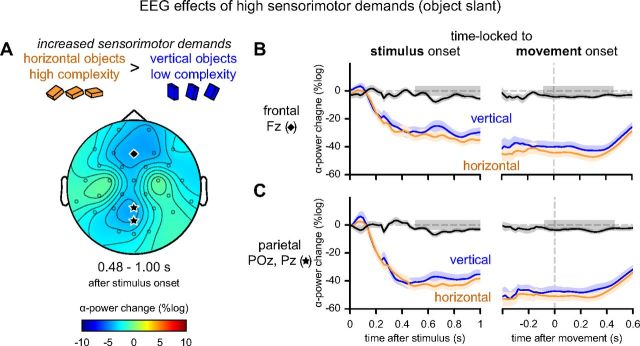Figure 4.
EEG effects of increased sensorimotor demands (object slant) during control TMS. A, Differential topography of power in the alpha-band after control stimulation as a factor of slant in the significant time window (time-locked to stimulus onset; p < 0.05 corrected for multiple-comparisons). Alpha-suppression is stronger during preparation and execution of a grasping movement toward horizontally slanted objects. B, Changes in oscillatory power over time in electrode Fz (indicated with a diamond in A) shown separately for trials with vertical (blue) and horizontal objects (orange) and their difference (black), time-locked to the stimulus (left) or to movement onset (right). Significant time windows are indicated with gray boxes ([480 1000] ms after stimulus onset, left panels; [−60 440] ms relative to movement onset, right panels). C, Changes in average power of electrodes POz and Pz (indicated with stars in A). Same conventions as in B.

